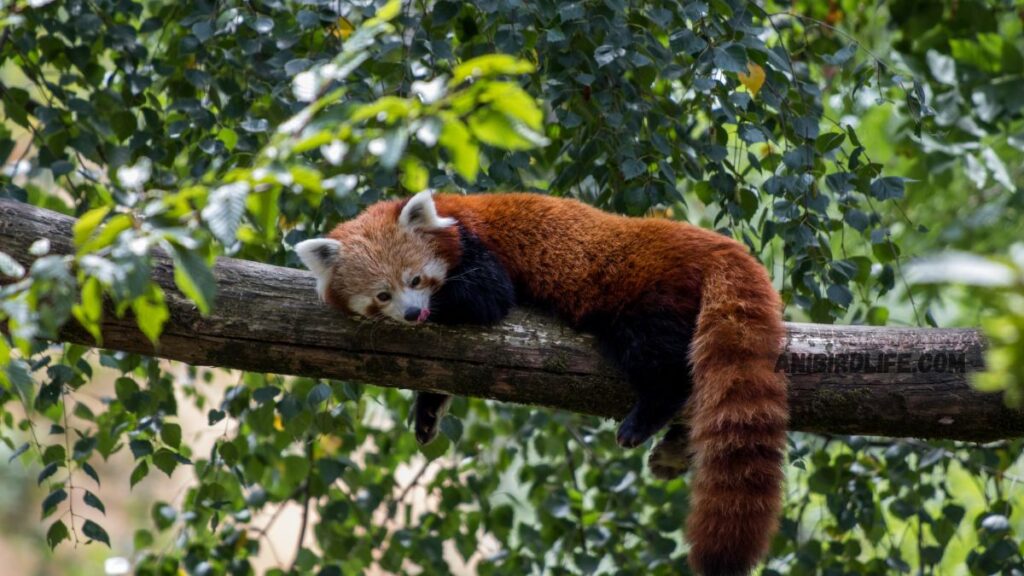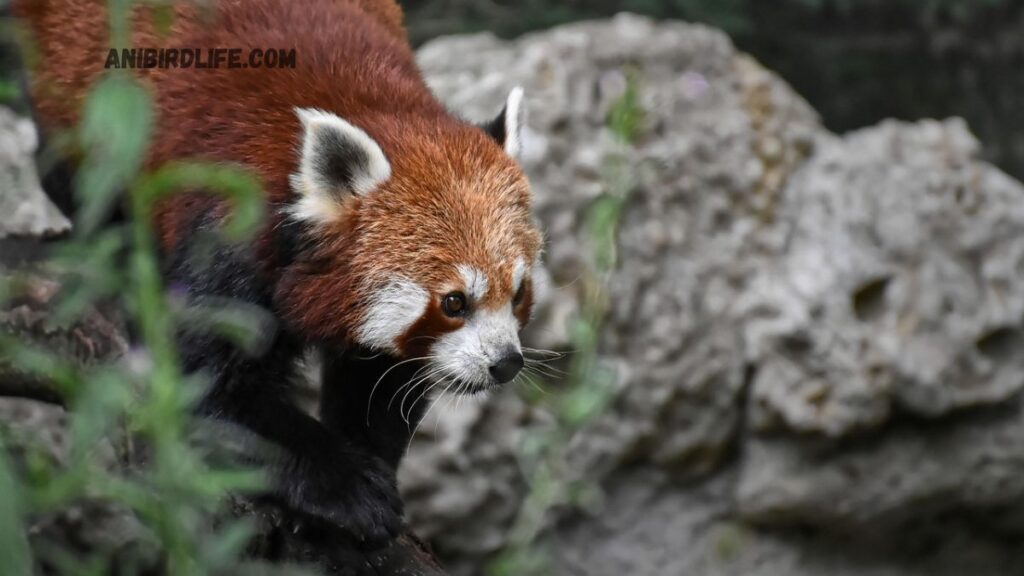Red pandas are among the most endearing animals in nature because of their vivid red hair, bushy tails, and cute cheeks. These creatures, which are often called “fire foxes” or “lesser pandas,” are indigenous to the temperate forests of southwestern China and the Himalayas. The International Union for Conservation of Nature (IUCN) lists red pandas as endangered despite their widespread use and cultural importance.
With less than 10,000 individuals remaining in the wild, their number is quickly decreasing. But why do red pandas face extinction? We’ll look at the main causes of their decline and potential solutions in this post.
Loss and fragmentation of habitat
Loss of habitat is one of the main causes of red panda extinction. Since 85–95% of their food consists of bamboo, red pandas depend on dense bamboo forests to survive. But because of urbanization, agriculture, and deforestation, these forests are vanishing at a startling rate.
Deforestation for Agriculture and Timber:
Red panda habitats are being extensively deforested due to the need for agricultural land and timber. Red pandas have less areas to live and eat as a result of forests being cut down for farming, logging, and cattle grazing.
Urbanization and Infrastructure Development:
More land is turned into roadways, communities, and industrial zones as the world’s population rises. Red panda habitats are not only destroyed, but they are also fragmented, which makes it challenging for the animals to travel between forest sections in search of food or mates.
Climate Change:
Red panda habitats are changing due to rising temperatures and shifting weather patterns. Red panda populations may suffer greatly if bamboo, their main food supply, declines since it is especially vulnerable to climate change.

Illegal wildlife trade and poaching
Red pandas are also seriously threatened by poaching. Red pandas are frequently sought for their fur, which is used to produce hats, clothes, and other items, even though they are legally protected in many nations. They are often targeted by the illegal pet trade because of their remarkable looks.
Fur Trade:
In some areas, red panda fur is highly prized, especially for traditional rituals and attire. Their already declining numbers are further reduced by illegal hunting, which is fueled by this demand.
Illegal Pet Trade:
Red pandas are occasionally kidnapped and offered for sale as exotic animals. In addition to being cruel, this technique damages the species by removing individuals from the wild and interfering with their regular reproductive cycles.
Human-Nature Discord
Conflicts between people and wildlife are increasing as human populations grow into red panda habitats. Because they may damage property or raid crops in pursuit of food, red pandas are frequently viewed as pests by farmers.
Retaliation Killing:
Farmers who see red pandas as a danger to their livelihoods occasionally kill them. This is particularly true in places where habitat degradation forces red pandas to enter agricultural areas.
Livestock Grazing:
Goats and cattle, among other domestic animals, frequently graze in red panda habitats, causing vegetation damage and competition for food. As a result, red pandas have less access to bamboo and other supplies.

Low Rates of Reproduction
Because of their poor rate of reproduction, red pandas have a hard time recovering from population decreases. One to four cubs are usually born to females each year, and not all of them make it to adulthood.
Slow Maturation:
Although red pandas may not begin reproducing until they are two or three years old, they attain sexual maturity at about 18 months of age. Their rapid reproduction is hampered by this slow maturation process.
High Infant Mortality:
Because of sickness, predation, and other causes, a large number of red panda cubs die within their first year of life. The species’ capacity to recover from population reductions is further diminished as a result.
Insufficient Genetic Variability
Inbreeding can result in a lack of genetic variation in small, isolated red panda populations. As a result, the species is less able to adapt to shifting climatic conditions and is more susceptible to disease.
Fragmented Habitats:
Red panda populations are becoming more isolated from one another as their habitats become more dispersed. This raises the possibility of inbreeding and restricts gene flow across populations.
Limited Breeding Opportunities:
As the number of red pandas in the wild declines, there are less chances for them to mate, which further diminishes genetic variety.
Competition and Natural Predators
Red pandas are mostly threatened by human activity, but they also have to contend with competition for resources and natural predators.
Predators:
Snow leopards, martens, and raptors are among the creatures that hunt on red pandas. Predation is a normal aspect of the environment, but when red panda numbers are already in decline, it presents a bigger hazard.

Competition:
For food and habitat, red pandas face up against other species like monkeys and wild pigs. In places with limited resources, this competition can be very fierce.
How Can Red Pandas Be Preserved?
Although the red panda’s decline is a complicated problem, there are things we can do to assist save and preserve this threatened species.
Protect and Restore Habitats:
The main goals of conservation should be to restore degraded areas and maintain the red panda’s current habitat. This entails establishing sustainable land-use practices, protected areas, and replanting initiatives.
Combat Poaching and Illegal trading:
Illegal red panda hunting and trading can be decreased by enforcing anti-poaching laws more strictly. Campaigns to raise public awareness may also help to lower the demand for red panda merchandise.
Encourage Community Involvement:
It is essential to involve nearby populations in conservation initiatives. Reducing human-wildlife conflict and promoting sustainable practices can be achieved by offering resources, education, and alternate sources of income.
Encourage Breeding Initiatives:
Red panda populations and genetic variety can be increased through captive breeding initiatives. Red panda reintroduction initiatives must to be paired with these programs.
Research and Monitoring:
To fully comprehend the environment, behavior, and challenges faced by red pandas, further research is required. Keeping an eye on populations can assist determine their current state and guide conservation efforts.
In conclusion
A distinctive and priceless component of the biodiversity of our world are red pandas. However, habitat degradation, poaching, conflict between humans and wildlife, and other reasons are threatening their survival.
We may contribute to ensuring that these stunning creatures continue to flourish in the wild by comprehending the reasons behind red panda endangered status and acting to mitigate these dangers. Everyone may contribute to the preservation of red pandas for future generations, whether it be by giving to conservation organizations, raising awareness, or making sustainable decisions.
